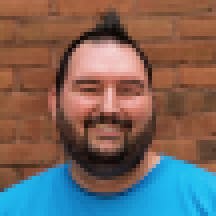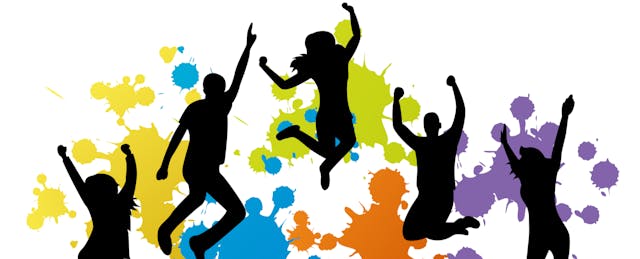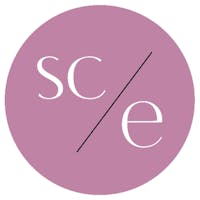When kids first join the Maker Foundations program at Digital Harbor Foundation, a technology-focused out-of-school organization in Baltimore, they are given a pile of everyday items such as an electric toothbrush, a plastic cup, a few markers and some rubber bands. Then they are told: Build a robot that draws. “It’s sort of sad to see the panic on their faces when they realize that’s all the direction you’re giving them,” says Shawn Grimes, the Center of Excellence Managing Director at Digital Harbor. “But that’s what we do—we remove support structures from them so that they’re learning on their own. If they have a question, the facilitator—they aren’t called teachers here—will say, ‘Did you Google it?’”

Prodding kids to become agile digital-media autodidacts is one way Digital Harbor fulfills its mission of preparing youth for a future that will have jobs and careers that don’t yet exist. Another way is through its student-staffed 3D print shop, where more advanced kids learn digital design and fabrication skills as well as workplace protocol all while making products—ranging from braille rings to wheelchair joysticks—for paying clients. The students handle everything—invoicing, project management, quality control, shipping, communication with customers—and learn the importance of things like showing up on time. They even find new clients by attending fairs and setting up and maintaining a website that advertises their services. “We’re really trying to make the students leaders,” says Grimes, “to make them feel like they have experiences that they can legitimately list on a résumé before they even graduate high school.”
Digital Harbor’s dedication to providing kids with the tools to pave their own future paths is one reason it was chosen to partner with the Susan Crown Exchange and researchers at the University of California Irvine and New York University. The collaboration produced the Reclaiming Digital Futures toolkit, a free web-based guide designed to help educators at out-of-school youth organizations integrate technology and digital learning into their programming and practices. “Through this partnership, we wanted to learn how best to prepare the rising generation, particularly in the digital age where ‘analog’ experiences now compete with phones, screens, texts, tweets, posts and the like,” says Susan Crown, founder of the Chicago-based social investment organization that funded the project.
“A lot of good out-of-school programs help kids explore their identity, develop cutting edge skills and get a greater vision of how they want to contribute to the world,” explains Rafi Santo, a researcher who worked on the collaboration. “But the best programs also figure out, ‘How do I connect these kids to opportunity? How do I make these pathways transparent and attainable?’”
The eight exemplar out-of-school programs that participated in the collaboration have all found different ways to practice this kind of brokering work—opening doors (or helping kids open their own doors) to opportunities in education or the workplace. DreamYard, an arts and social justice organization in the Bronx, helps kids find a bridge to college or the workforce through learning portfolios. The concept, borrowed from one of DreamYard’s partners—the Parsons School of Design—is an online version of the old-school art portfolio, with significant enhancements: It’s digital and thus requires no schlepping around; it contains not just finished products but also works-in-progress and the learning and thinking process behind the work; and it can be applied to any endeavor, not just art.
“We were thinking about ways to better support our visual arts students around portfolio development to pursue higher education, because we know that there's a lack of representation at art and design schools for low-income students and students of color,” says Hillary Kolos, DreamYard’s Director of Digital Learning. “A lot of that has to do not with a lack of hard work or talent but with navigating these processes of portfolio development and admissions for higher education.”
In addition to creating digital work—be it a Google doc, a slide show or scanned physical work—and figuring out ways to organize and contextualize it, kids learn how to document their process. Whether they are creating a sculpture or solving a math problem, students can show steps taken and moments of struggle or breakthrough by taking pictures, recording a time-lapse video or writing a blog. “Showing how you think and solve problems might eventually become more important than your exact skills because everything is changing so much,” says Kolos.

What part of your work you show to whom and when you make it shareable are also important aspects of learning portfolios. “Positioning kids to take the kind of thinking they do all the time in a social space and bring it to the work world and their budding professional identities is one of the real magic pieces of this work on digital portfolios at DreamYard,” says Santo.
“The entire labor landscape is transforming in a way that requires all of us to be very good at regularly narrating who we are and what we do,” explains Santo. Being able to do that effectively using digital media and the internet “is becoming an absolute critical skill for young people who are dealing with the gig economy.
Indeed, the World Economic Forum’s Future of Jobs Report 2018 predicts that by 2022 there will be a significantly greater global demand for technical skills like programming and app development as well as social emotional skills such as creative thinking, problem-solving and negotiating. “Programs such as those supported by the Reclaiming Digital Futures project can play a role in bridging this looming gap in critical skills,” explains Crown, “by training a diverse, future workforce that is often outside of traditional talent pools.”
Adds Santo, “We have a responsibility to make sure [kids] get good at the kinds of things that are going to allow them to be flexible and dynamic and quickly communicate the ways that they are able to provide value to a given larger project or organization.”

Kolos remembers one talented painter who joined DreamYard early in her high school career and resisted the idea of blogging about her artistic process. But she received support and developed a blogging practice. As a senior, she wanted to apply to a range of art schools, specifically Parsons. “I started noticing her blog was changing and the template was getting updated,” says Kolos. “Some posts were going away, some posts were getting highlighted more, and she was tagging her posts so that you could click through them and see what was her work and what was stuff that inspired her.” The painter made her learning portfolio part of her application process. And she did get into Parsons. “I can't say the blog did it,” says Kolos. “It’s clearly her own talent and hard work got her into Parsons, but it was interesting to see that once she had that goal of getting into an art and science school, she saw the worth in writing a blog.”
Digital Harbor’s practice of client work as pedagogy is another way to amplify the value of basic skills learned in school. “We had a youth who would tell you he's no good at math, and he was actually doing really poorly in his math class,” says Grimes. “But when he was in the print shop, we said, ‘This roll of filament is one kilogram of filament. This piece takes a few grams to print. How many pieces can we get out of this one roll of filament?’ He figured out that, if a roll of filament is $25 and we got 100 pieces out of this one roll, that means they’re costing us $0.25 each. If we charge $5 for this item, what's our profit margin? That's all basic algebra, but it was presented in a way that made a little bit more sense than just formulas on a piece of paper. Yes, 3D printing is cool from a technology perspective, but you can also use it to teach algebra.”
And like curating, blogging and “Googling,” algebra—or more specifically, knowing how to estimate profit margins—is a skill that can open doors.
Kolos’s Go-To Digital Learning Resources
- Dr. Nettrice Gaskins' blog
- Connected Learning Lab at UC Irvine
- Hive NYC Learning Network
- Data and Society
- Center for Media Justice
- Allied Media Projects
Other Resources for Educators
- Digital Harbor Foundation’s teacher resource website
- No Such Thing: K12 Education in the Digital Age podcast
- DreamYard’s Maker Institute video
- The 3D PrintShop - Client-based Work as Pedagogy at Digital Harbor Foundation case example



